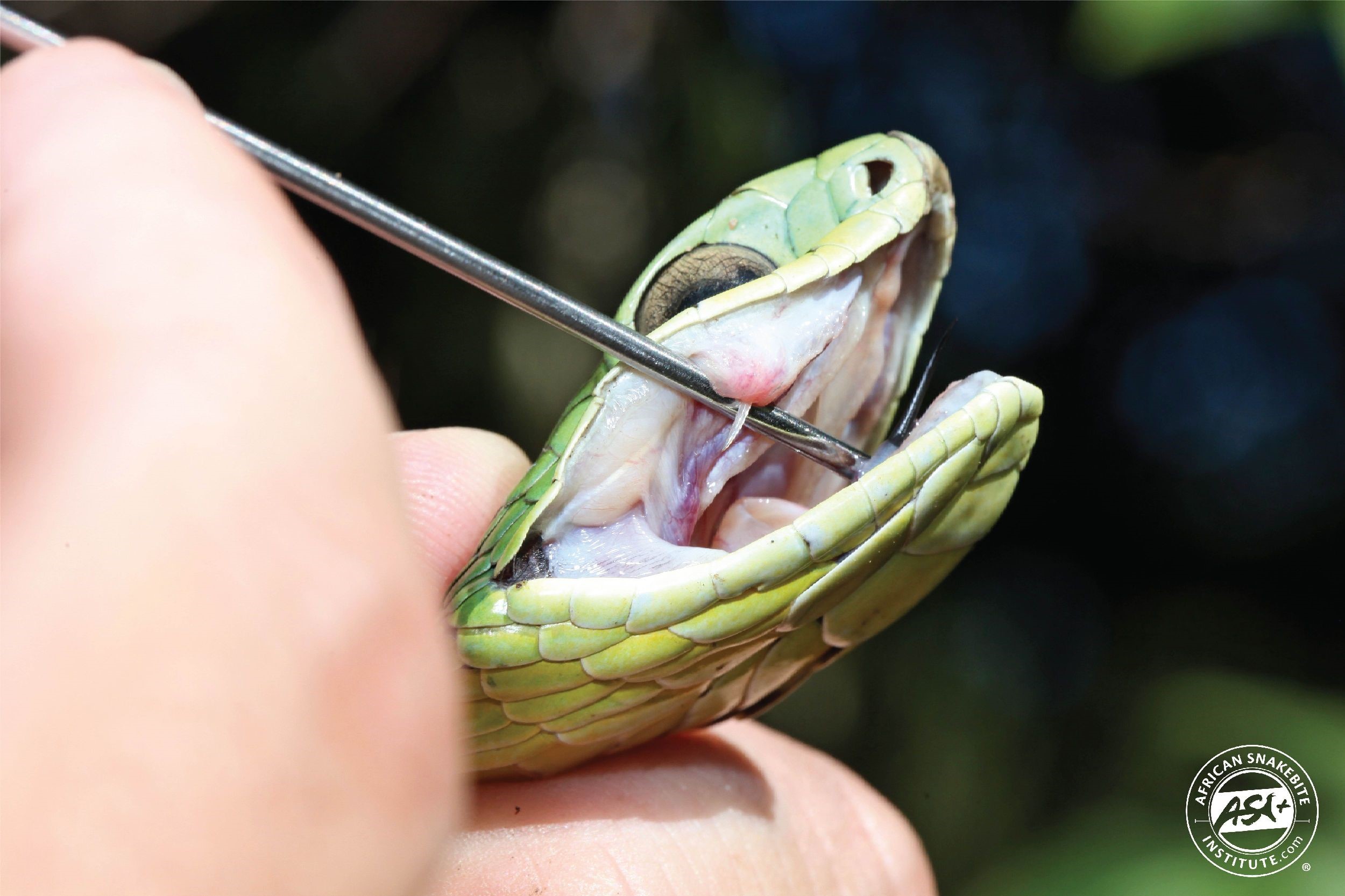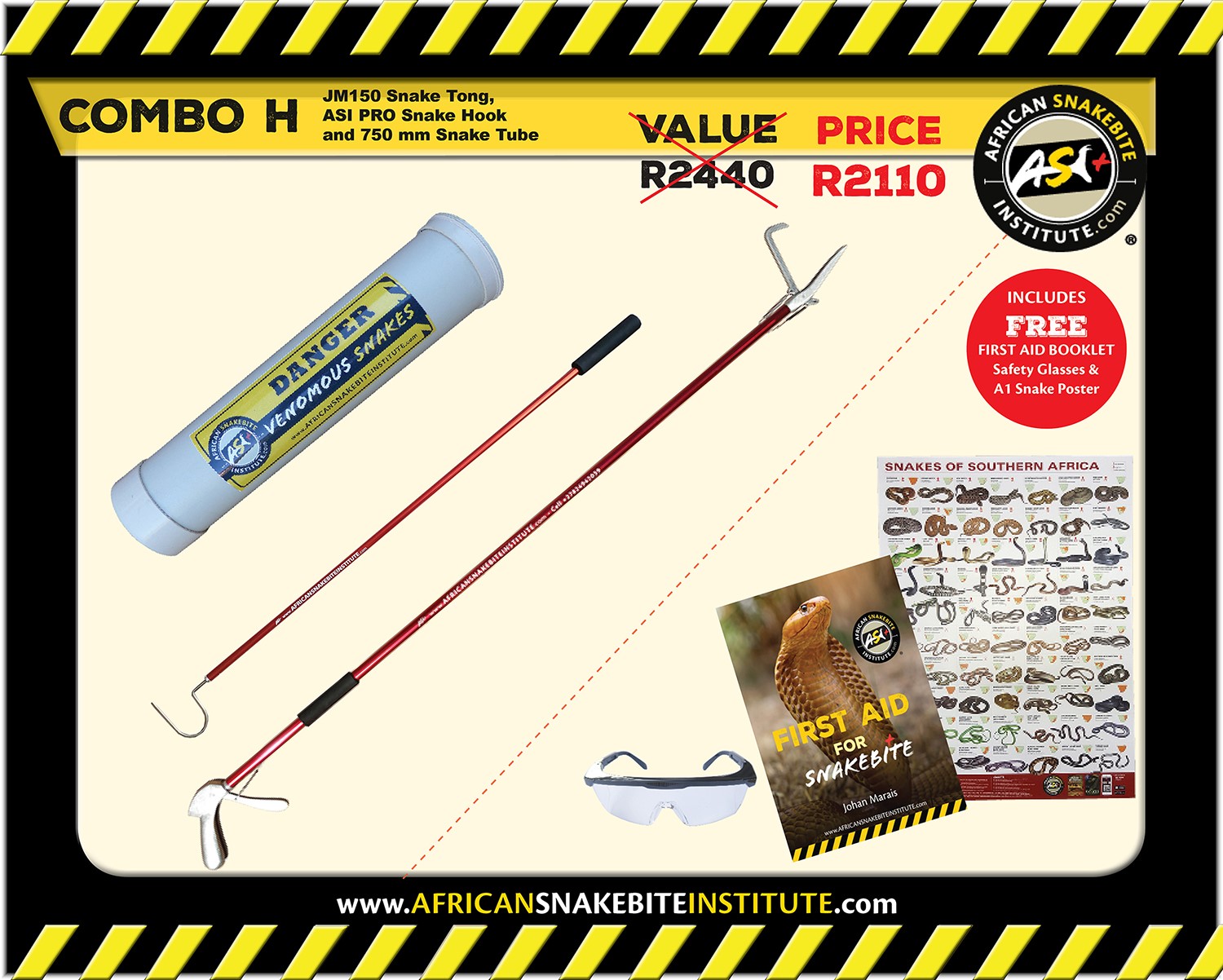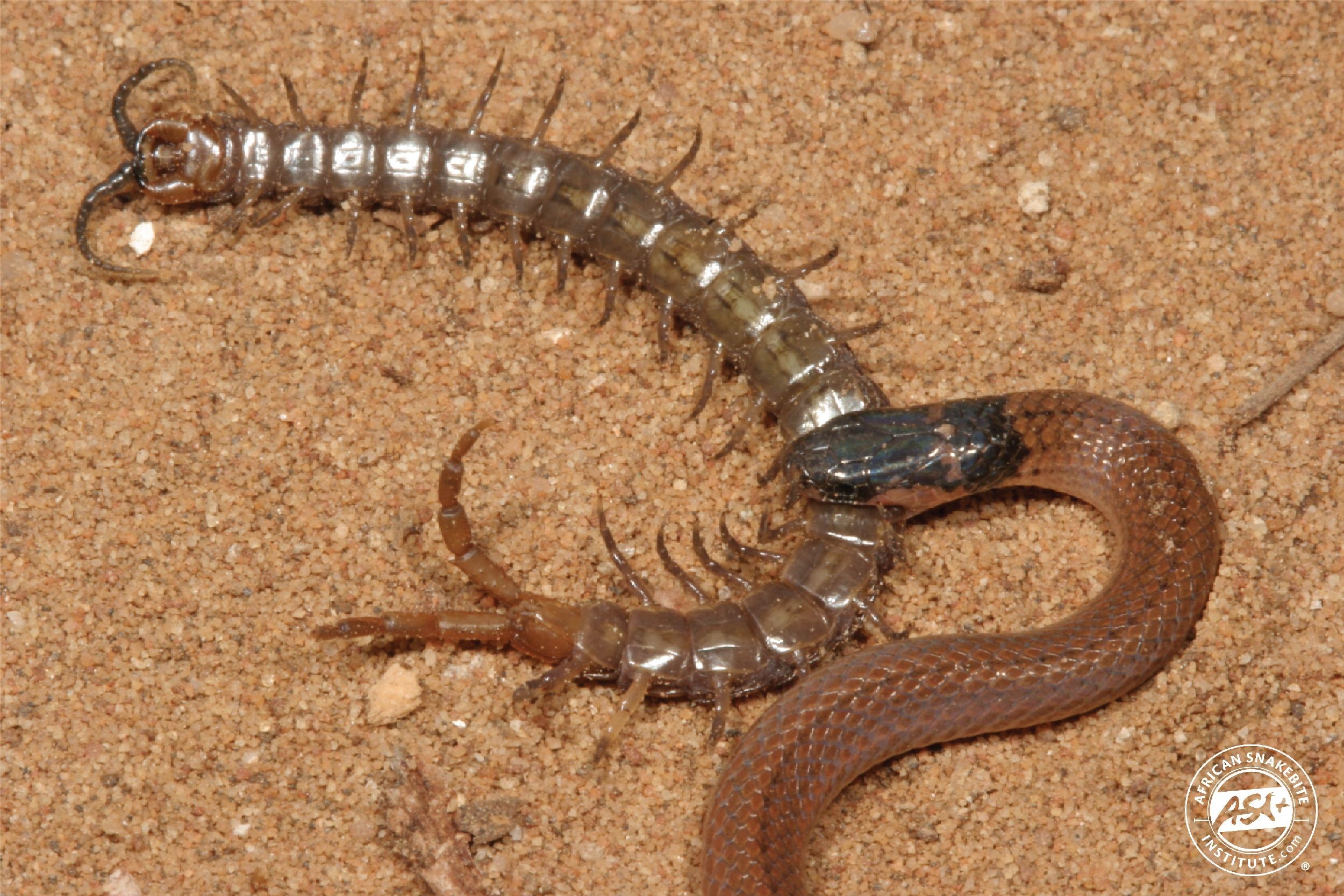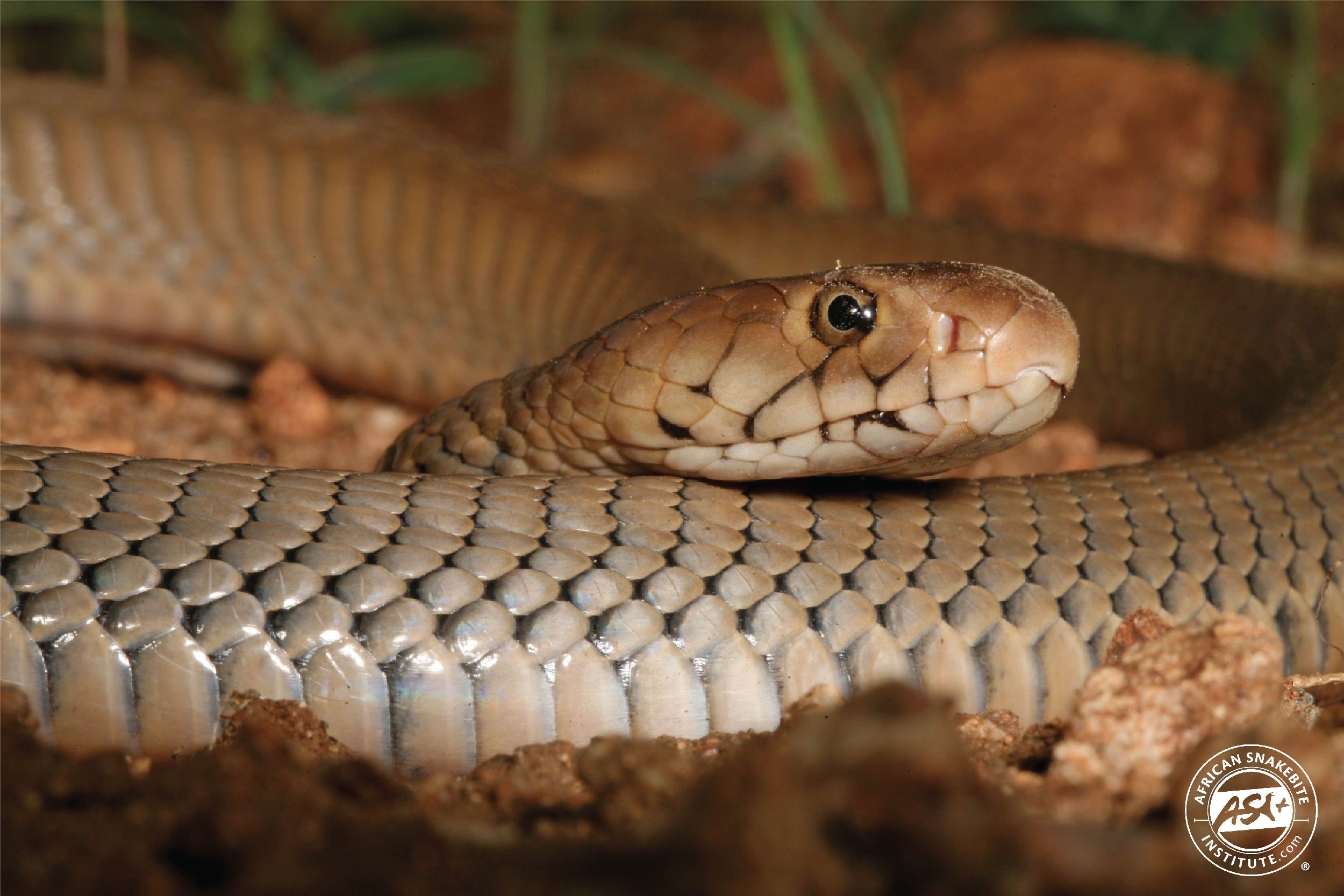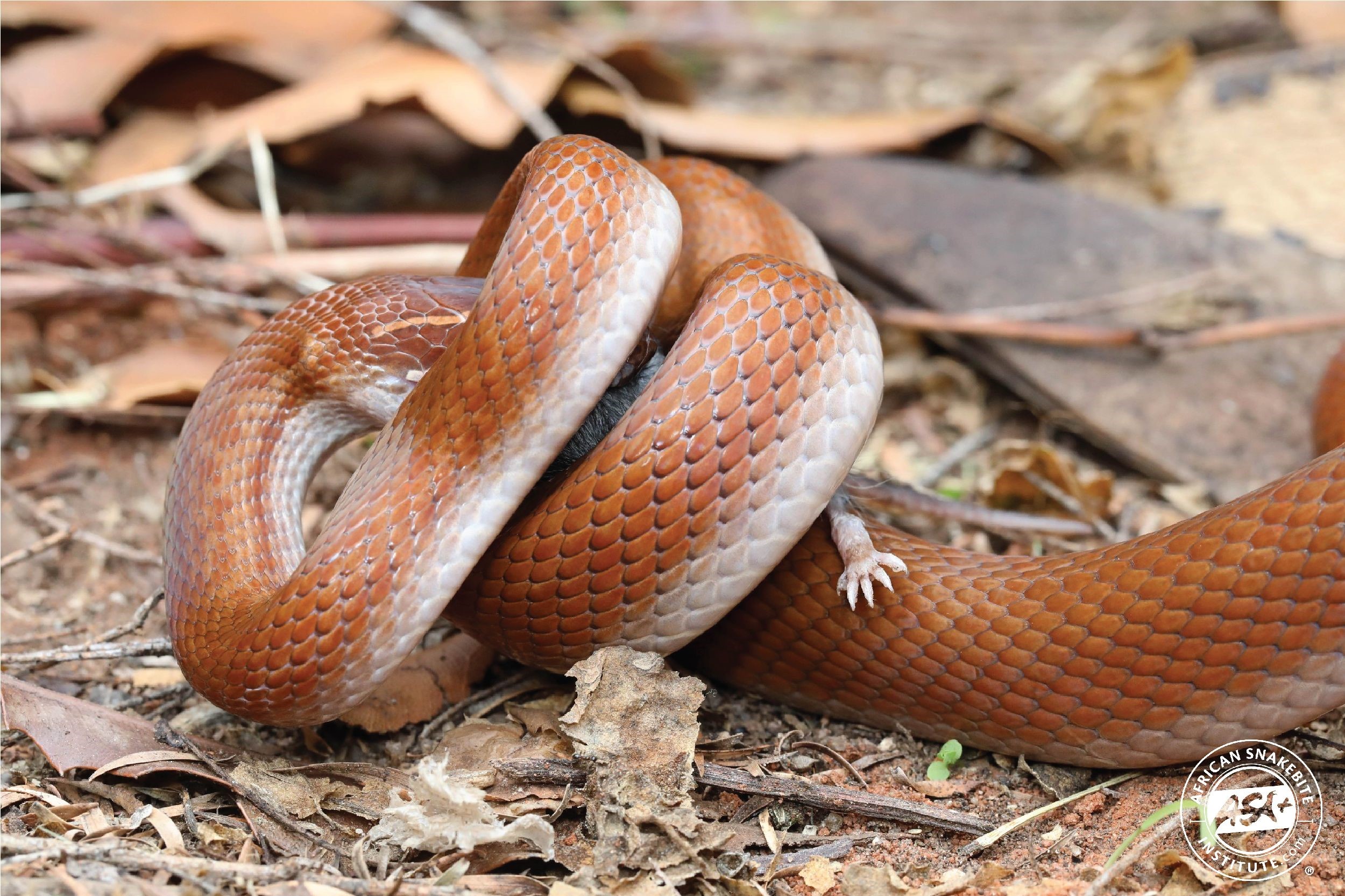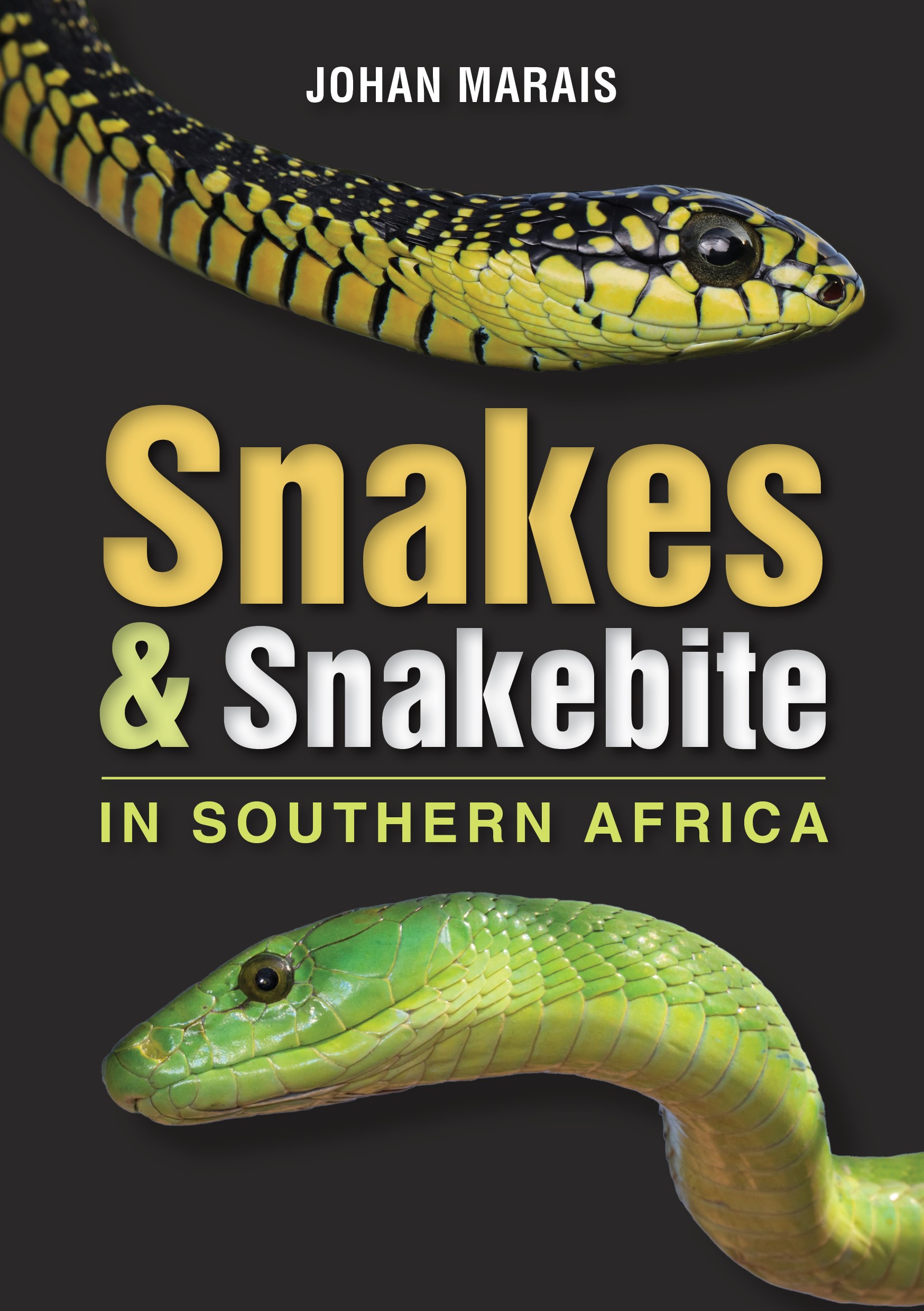The first snakes evolved more than 120 million years ago. To the best of our knowledge none of them had venom. That came much later – around 80 million years back. Prior to that, snakes largely relied on muscle power to overcome their prey, but that was often problematic – if you grabbed a prey animal and constricted it, there was always the danger that you could be injured in the process.
The first snakes to develop venom were the so-called back-fanged snakes. Some of the teeth in the back of the mouth grew longer than the other teeth and had groves down the front for venom to trickle down. Venom glands were developed in the cheeks and venom was produced – largely a mixture of proteins and peptides. The venom glands of back-fanged snakes, if compared with modern cobras and adders, are quite primitive with minimal muscular control to regulate the amount of venom injected when biting. These glands are referred to as Duvernoy’s glands. If you, for example, observe a Boomslang feeding on a large chameleon, it usually bites its prey, gives it a few good bites and may then release it and approach from a different angle and bite again. The more it chews, the quicker it injects sufficient venom to kill its prey.



